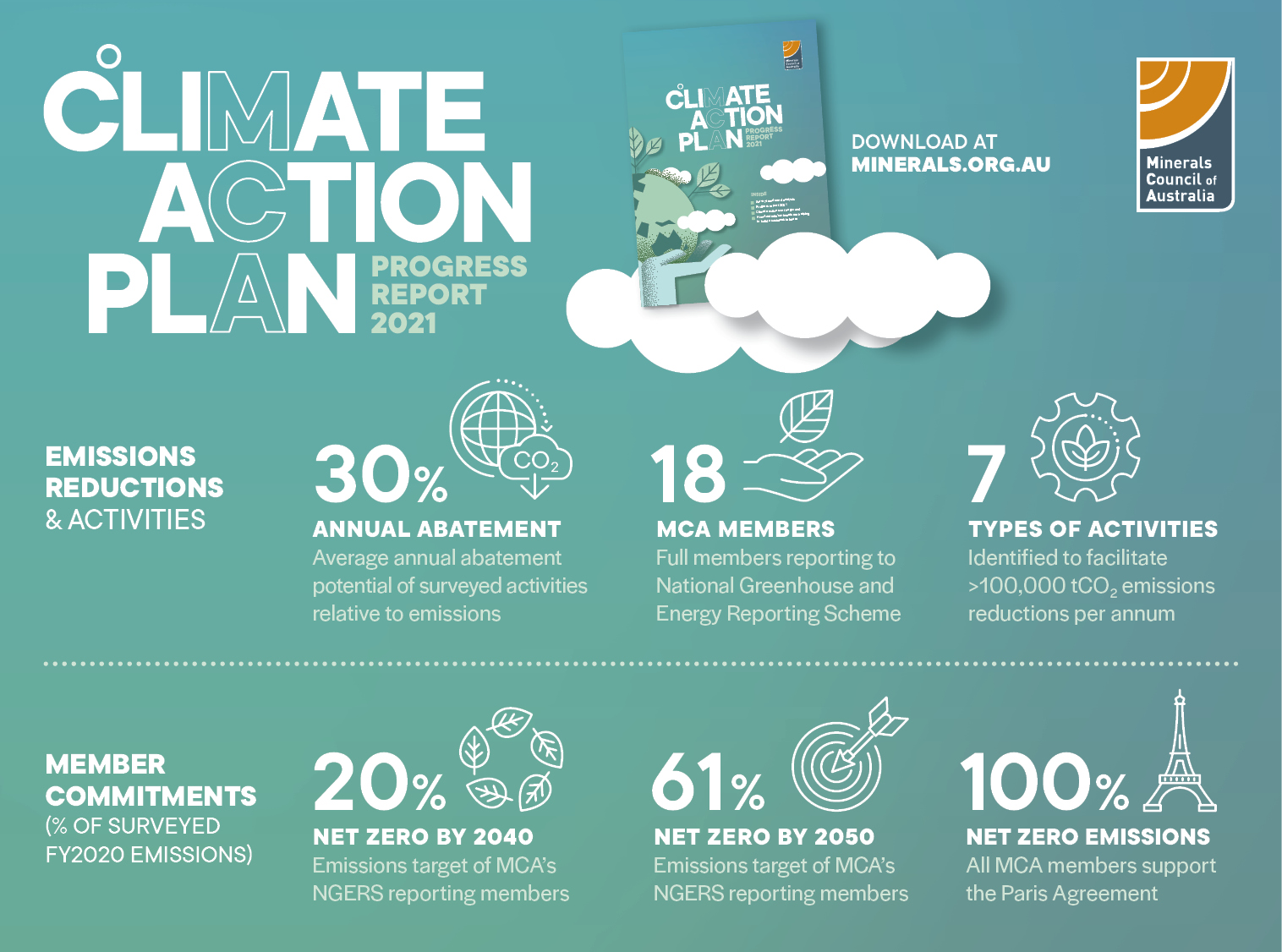- Media Release
- Publications
- Reports
Climate Action Plan progress report shows mining industry is investing in innovative solutions to cut emissions
Australia’s minerals sector is playing its part in addressing climate change, with the first progress report on the MCA’s Climate Action Plan showing the industry has hit the ground running with emissions reductions in Year 1 and significant annual emissions reductions potential of 30 per cent through initiatives underway.
The progress report details the status of measures developed in the Climate Action Plan launched in June 2020 and the progress made to date, drawing on publicly-reported emissions data and a survey of full MCA members reporting to federal compliance schemes.
While all MCA members are committed to the climate goals of the Paris Agreement, well over three quarters of surveyed members’ FY2020 emissions are covered by companies committed to achieving net zero emissions by 2050. A similar proportion is working towards aligning corporate reporting with the recommendations of the Task Force on Climate-related Disclosures (TCFD), which is supported by the MCA and aims to improve and increase company reporting of climate-related financial information.
A more sustainable minerals sector is not only important in providing the prosperity crucial to Australia’s post-COVID recovery, it is also helping to sustain and improve the lives of millions around the world.
Australian mining is essential in providing the critical raw materials which are necessary for modern and emerging economies to flourish in a decarbonised future.
The progress report highlights 12 case studies on how the industry is taking practical climate action, including the rollout of renewables, carbon capture and storage development, methane capture and conversion, electric and autonomous vehicles investments, battery storage and hydrogen trials and exploration efficiencies. Examples include:
- Newcrest contracting for more than 40 per cent of its Cadia mine’s projected energy demand from 2024 with wind energy providers
- Newmont’s US$500 million investment in climate change initiatives
- BHP’s deal for renewable energy supply aimed at halving emissions from its QLD coal mine energy use
- Rio Tinto’s deployment of solar PV and battery storage at Gudai-Darri in WA estimated to reduce emissions by 90,000 tonnes per year
- Kirkland Lake Gold investing US$75 million each year for the next five years in environmental technology centres aimed at further reducing its carbon footprint through technology and innovation
- Methane captured at Anglo American’s Moranbah North, Grosvenor and Capcoal underground metallurgical coal mines being used by nearby power stations to generate more than 140 MW of electricity per annum, or enough to power 90,000 homes
- AngloGold Ashanti upgrading its current diesel haul fleet at its Tropicana gold mine by trialling a fleet of six new electric haul trucks to reduce diesel consumption.
The progress report shows the industry is committed to developing the technologies and processes necessary for decarbonisation and identifying the necessary investments and pathways to reduce emissions.
The report was released during Minerals Week, the MCA’s annual opportunity to engage with decision makers in Canberra. The three-day event provides a high-profile platform for the executive leadership of Australian mining to discuss, debate and develop the policies that create jobs, support investment and sustain the wellbeing of mining communities and the national economy.
ends
